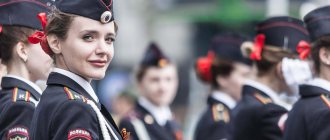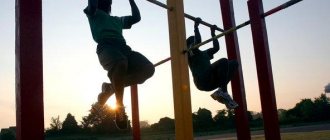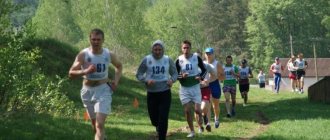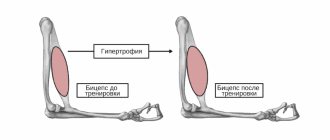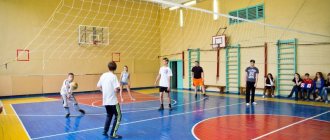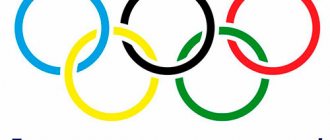The general condition of the human body, its real capabilities, performance, can be called physical fitness. This is usually achieved through strength training. The more systematically and in-depth a person deals with his body, the higher his preparation. At a good level, a person has resistance to various diseases, is less susceptible to stress, emotional and nervous shocks, is stronger and more self-possessed. The respiratory and circulatory systems of such a person are much better developed than those of an unprepared person, and mental potential, together with the ability to concentrate, allows one to achieve success in work or study.
Indicators of physical fitness (physical qualities of a person)
If we don’t talk about health problems, an athlete can achieve physical fitness only by diligently performing a variety of exercises. Preparation reflects the processes of growth and formation at individual stages of individual ontogenesis (development). The nuances of ngo directly depend on the personal characteristics of its design and body structure.
Physical fitness is an extremely important indicator of the general condition and level of health of the population of a particular country. It is usually put on a par with mortality, fertility or morbidity.
general information
Some processes are constantly taking place in the body of each of us; they do not stop until our life cycle ends. They are usually divided into age stages, which are characterized by their properties (mental, physical, morphological, functional). The higher the level and speed of the totality of these processes, the more physically prepared a person can be considered, and his nervous, mental, and physical performance is high.
Sometimes, due to the fact that the sequence of development is disrupted in the early stages of intrauterine development, irreversible changes occur that affect the entire vital activity of the body. However, in most cases, if we don’t talk about pathologies, external factors have a direct impact on a person’s physical fitness: upbringing, dietary habits, social nuances, and the presence of diseases. They are more significant than genetic inclinations and can have an impact many times more powerful.
But what is physical fitness, what properties can be included in the list of properties of any organism? Indicators of physical fitness include functions that are assessed on the basis of simple data: height, body weight, proportions of development of its individual parts, lung capacity, muscle strength, tone, condition of the musculoskeletal system, posture, presence, thickness of the lipid layer and much more. more. It so happened that it is customary to evaluate the general condition based on external morphological factors, but only in conjunction with functional parameters, for the objectivity of the assessment.
Strength or muscle strength
This indicator is expressed in a person's ability or inability to withstand a certain level of resistance by tensing the muscles. Many activities involve the development of such strength both in everyday life and in production. In many ways, this factor depends not only on the mass and quality of the muscles themselves, but also on the biochemical processes that occur in them, as well as the activity of the central nervous system. It can occur in isotonic or isometric mode. In the first case, this refers to dynamic (explosive) force (contraction or stretching of muscles), and in the second to static force (maintaining one position under load). There are several types of force.
- Muscular . This is the ability of the muscle to overcome any resistance.
- Absolute . This term refers to the degree of force tension while overcoming resistance, without taking into account the total mass.
- Relative . This is the ratio of force per unit of own weight.
- Express . To measure such strength, you can be guided by such indicators as the strength of the arms, legs, abdominals, and back.
Increased strength is directly related to increased muscle mass. Moreover, this has both an aesthetic aspect (body beauty) and a purely “applied” aspect - strong muscles are less susceptible to injury, they help maintain natural body weight. Muscles require much more calories than lipid layers, which is why strong people are usually less susceptible to problems such as abdominal or constitutional exogenous obesity.
Quickness (speed)
This property is directly characterized by how often muscles can contract and relax. The concept is divided into three main subcategories.
- Sprint speed.
- Speed of movement.
- Fast response.
The easiest way to determine sprint speed. It is calculated simply: you need to measure how long it takes an athlete to run a distance of twenty-five meters.
Endurance
This indicator of physical fitness is a rather broad concept. It covers all the qualities that indicate how long the body can withstand various stresses.
- General or aerobic . To convert sugar (carbohydrates) into clean energy, the aerobic system uses oxygen. With intense exercise, the process can affect lipids and even proteins (catabolism). Working to the limit of your aerobic endurance helps you burn more excess mass. Measurements for this property are usually carried out during a run of 2 kilometers for girls, 3 kilometers for boys.
- Sprint (speed) . This is the ability to withstand loads at the highest rates of muscle contraction and relaxation. Usually measurements are also taken while running per unit of time.
- Power . This is the ability to withstand quite significant force loads. This quality is determined by how long the muscles are capable of repeating the same efforts over a certain period of time. It is defined differently for different muscle groups: shoulder girdle - hanging pull-ups, abdominals - raising and lowering the body while lying down.
- Speed-strength . This indicator combines the last two. It highlights the ability to perform any strength exercise or work for a specific period of time.
Flexibility
One of the most important qualities is characterized by the ability of the human body to perform various movements with a relatively large amplitude and scope. The maximum of this value will be considered flexibility. It denotes the general mobility of all joints of the body. Experts distinguish two main forms of mobility.
- Passive . These are those that are made under the influence of external factors and forces.
- Active . Voluntary movements that are performed by contracting and relaxing muscle groups passing through a particular joint.
If an athlete’s training complex includes only strength loads, and not enough attention is paid to stretching, the flexibility indicator can drop significantly, even with regular exercise. Physical fitness is also characterized by this important property.
Dexterity
This is a quality that helps to learn different movements in a minimum period of time. This also takes into account the ability to quickly adjust and “adapt” to performing such movements. The outstanding Soviet scientist-physiologist Nikolai Aleksandrovich Bernstein considered this property to be the ability to quickly and with the least resistance motorically get out of any difficult situation.
From a psychological point of view, dexterity can directly depend on the quality of the central nervous system, the ability to adequately evaluate and solve various motor problems. The greater the set of motor skills, the higher the agility score. People who have such abilities are more pronounced can easily learn to juggle, play different games, and perform acrobatic exercises.
Composition and coordination
Another important quality, it determines the ratio in one organism of the presence of lipid, protein, and bone tissue. Depending on weight, age, you can determine the degree of health and physical fitness. It is clear that excess fat mass can indicate heart disease, hypertension, diabetes and other problems.
Coordination is directly related to agility as well as body composition. This is the ability to properly control one’s own muscles, demonstrating the coherence of the work of different body systems. Good coordination of movements allows you to maintain balance and not get tired longer due to the precision of performing various body movements.
Proportionality
This property is also called the height-weight indicator, and its essence lies in the name itself. This is a set of parameters, which include body weight, height, distribution of weight centers, body type. This guides professional trainers when selecting a particular person to perform certain exercises or engage in different sports, depending on the individual characteristics of the body.
Physical fitness assessment
Many people do not understand what is meant by physical fitness testing, or how something like this can be assessed. After all, each person is individual, different from the other, and therefore his preparation is also different. It's time to explain what we are talking about, as well as provide some numbers for a better understanding. Such a characteristic is given only after an assessment of the general physical functional state. There are a number of tests, measurements and tests that have been developed and selected for a long time.
Keeping a self-control diary
The main, main method of monitoring physical fitness is keeping your own diary, where you will record all the changes that occur to your body during training. To do this, you just need to line a regular notebook, where you enter data about the work of different body systems, mood, successes, for a certain date.
- Pulse at rest and after exercise.
- Orthostatic test.
- Volumes and characteristics of loads.
- Breathing rate before and after exercise.
- General information about your health.
- Mood: positive or negative.
- Recovery time.
Keeping such records gives a general idea of the athlete's health status, as well as his functional indicators. It’s even useful to do them purely for yourself in order to understand what you should pay more attention to.
Physical fitness standards
A whole set of indicators has been developed that are considered average and also the same for everyone.
For schoolchildren and students
A certain part of the tests relates to assessing the physical fitness of students in schools, technical schools, universities and other educational institutions. By how the physical fitness indicators of the same person have changed, for example, over the course of a semester, one can generally judge the preparation work done. This includes the use of special tools, equipment, as well as physical education methods.
For the army
The armed forces are a separate area of physical training. There are different types of testing that show a soldier's compliance with generally accepted standards of a particular country. They can vary quite significantly from country to country. They are freely available, so let's look at just a few for comparison.
Pull-up on the bar
- Great Britain – 12 times.
- USA – 10 times.
- Germany – 12 times.
- France – 8 times.
- Russia – 12-13 times.
Running 1000 meters (1 kilometer)
- UK - 4.7-5 minutes.
- USA – 7-8 minutes.
- Germany – 6 minutes.
- France - 3.5-4.6 minutes.
- Russia – 3.3-3.25 minutes.
Methods for assessing physical fitness (tests)
To monitor the physical training of students or military personnel, a set of special tests (tests) is provided. They are general, intended for the average girl or guy, as well as special ones if a person has already completed or is not able to complete them.
Are common
- Standing long jump.
- Raising and lowering the body from a sitting position.
- Bend the body forward on a gymnastic bench.
Medical group
- Pull-up on the bar.
- Swimming.
- Cross-country skiing.
- Abdominal exercises (for women).
- Arm curl (lying position).
- Flexibility tests.
- Jumping rope.
- Cooper test.
- Running (1, 2, 3 kilometers).
- Standing long jumps.
To assess the cardiovascular activity of the body, it is usually customary to use the so-called Ruffier test, as well as the Harvard Step Test Index (HST).
Cooper test
This test was invented back in 1968 by the American military doctor and scientist Kenneth Cooper. It is designed for healthy people in good health at the age of no more than thirty-five years.
- Warm up (3-15 minutes).
- Run (bicycle, swim) to measure distance with maximum “extension” in 12 seconds.
- Hitch.
Moreover, the value of this test is not in its results for a certain period, but in the dynamics of change as physical training progresses.
IGST
This is a much more stressful test, which is offered only to already trained athletes. For beginners, such methods are ineffective, since they generally fail to meet the standards. The essence of the test is simple: in 300 seconds a person must steadily (marching) ascend and descend onto a chair or bench. After this, you are given one minute to rest. The index itself is calculated using a formula.
IGST = tx 100 / (F1+F2 + F3) x 2
Here the values F1, F2, F3 indicate the pulse measured respectively in the second, third, fourth minute after the load. There is another, averaged, simplified formula.
IGST = tx 100 / fx 5.5
Where:
t — ascent time in seconds.
f—HR (pulse, heart rate).
A Smarter Way to Assess Your Fitness
Inspection of special units can hardly be called generally accepted. Let's try to evaluate our physical. training according to standards for contract workers.
Their fitness level is assessed based on three or four exercises. An example of instructions is here.
The following exercises have been selected for men:
- Straight pull-up, crossbar;
- 100 meter race;
- Race 3000 meters;
- If possible, swim 100 meters.
For women:
- Bend forward;
- 100 meter race;
- 1000 meters.
- Optional, 100 meter swim.
Control exercises are performed in sportswear for one day.
As you can see, these are quite reasonable standard exercises that you can take to evaluate your physical fitness.

